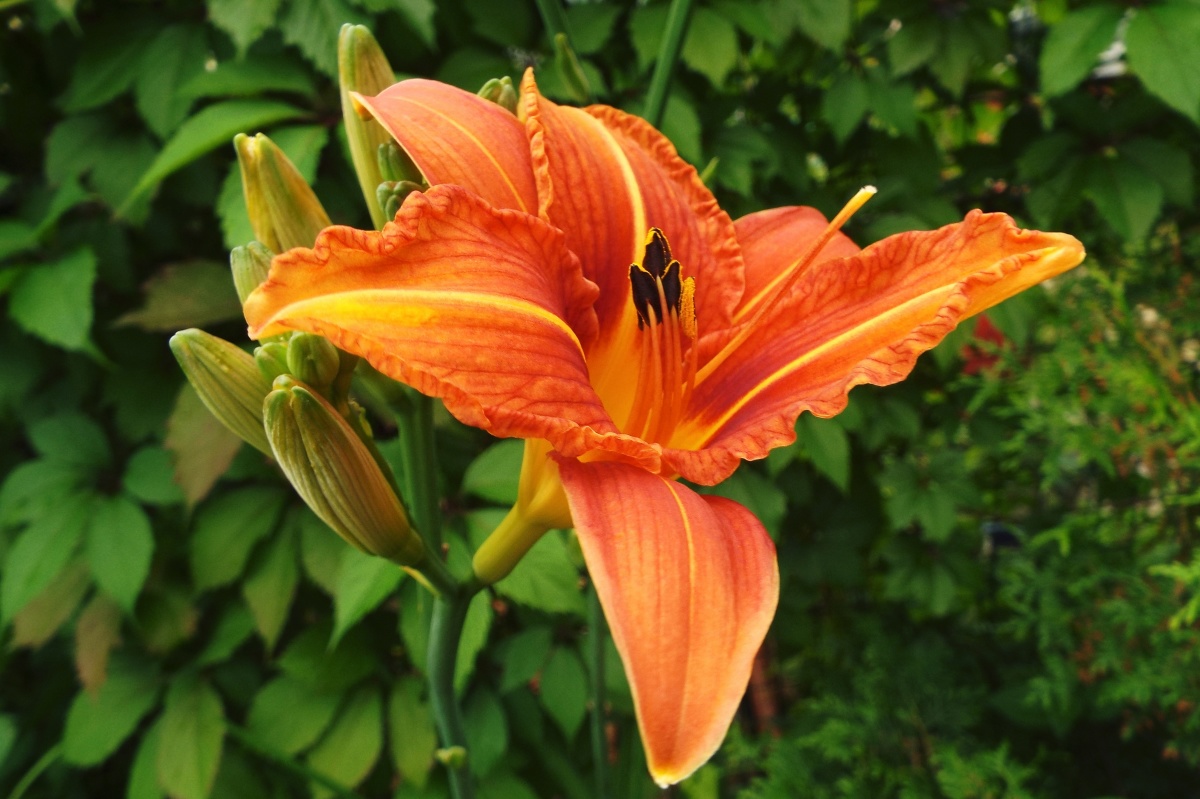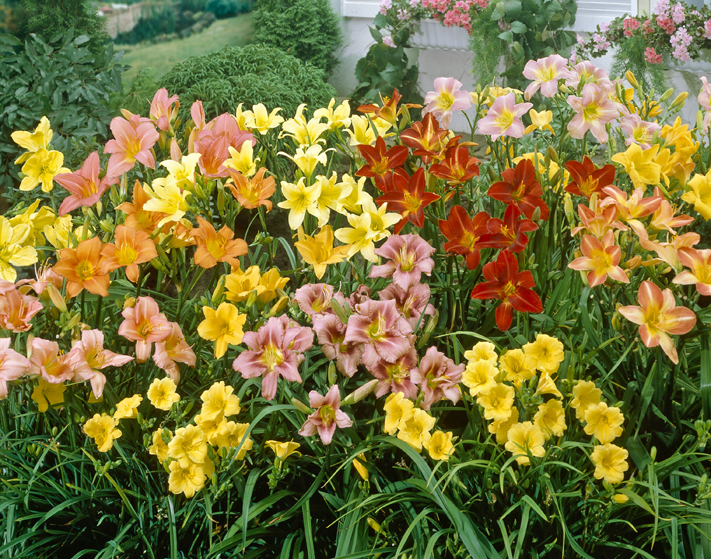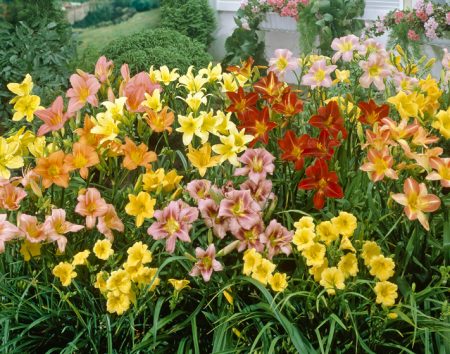 Daylilies in garden design are very popular, as they combine with many other flowers (photo). But, this is by no means the only reason why daylilies are so popular among gardeners. These flowers are not capricious at all, they are very easy to care for, they have a decorative appeal, are perennial plants, bloom for a long time, have a wide color gamut, and are resistant to shade.
Daylilies in garden design are very popular, as they combine with many other flowers (photo). But, this is by no means the only reason why daylilies are so popular among gardeners. These flowers are not capricious at all, they are very easy to care for, they have a decorative appeal, are perennial plants, bloom for a long time, have a wide color gamut, and are resistant to shade.
Is this not enough for daylilies to appear and take their place in the garden or on the summer terrace? And if those who are engaged in landscape design know what flowers daylilies combine in garden design (photo), then beginners will have to get a little deeper into the theme to create a truly unique and dazzling beauty of the garden. Talk about the ways grow a rose from a handle at home with a photo.
Where daylilies are used
Daylilies are universal flowers that can be used in landscape design without special restrictions. Flowers will fit well into any kind of garden, be it country style, or oriental. They can be used for alpine hills. In general, for which there is enough imagination, daylilies, which look good both alone and in a combined version with other plants, need to be used there. And if it became clear with where it is possible to use daylilies, then with what colors is daylily combined in garden design? This remains to be seen.
Color Combination Options
Before embarking on any burdens and starting to create floral arrangements, you should pay attention to the color of the daylily variety. The successful combination of daylily with other flowers depends in many respects on the color.
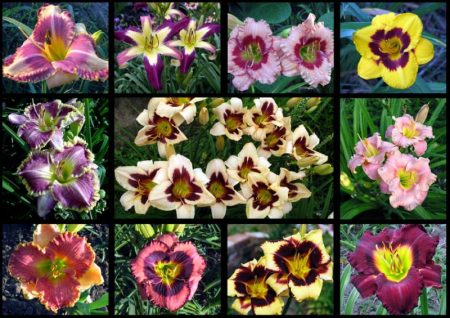
So, for example, yellow, orange and brown-bronze daylily varieties harmoniously look together with agapanthus. It turns out the game in contrast, bright flowers stand out from each other and harmoniously complement.
Variety Matador looks good against a background of crocosmia. Bloody scarlet flowers with a yellow core will become an extraordinary, bright decoration of a flower bed. And most importantly, such a flower will not be lost against the background of others and will definitely fit into a harmonious composition.
General recommendations
Daylilies combine perfectly with bulb plants, for example, tulips, irises, hyacinths. But in order for the overall picture to look balanced, it is important to know that the onion flowers are planted in the foreground, and the daylily in the background. Such a planting will help save bulb plants from overheating and make the flowerbed bright, but not causing it.
You can make hedges from daylilies. It is these flowers that are very well suited for this. To do this, you need to choose solid varieties of the flower and preferably different among themselves, at least in color.
The best flowers for the lilyneik are the following flowers:
- Cat mint;
- Dahlia;
- Kniphofia;
- Veronica Longifolia.
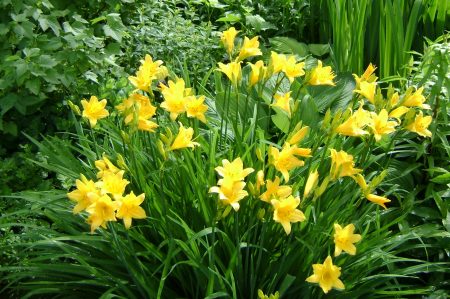
How to care for daylily
Daylilies are often called flowers for lazy people, as they are very unpretentious in care. But, in order for them to grow up beautiful, well-groomed and to please their longevity, you still need to make some efforts and create a favorable living environment for them.
The soil
Soil for these colors you need to choose loose, organic, with good drainage. If the soil is clay, then compost and sand can be added to it, and peat can reduce the acidity of such soil.
Shine
Daylily flowers tolerate the shadow well, but despite this, they still need light at least 7 hours a day in order to bloom for a long time and richly.
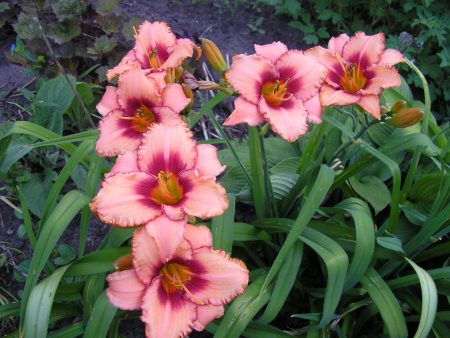
How to water
Daylilies have a strong root system, so dry soil does not pose a threat to them. They can extract moisture from their very depths. They tolerate periods of drought well, but this reflects on their appearance: the color is less saturated, the buds are not so lush and smaller in size. Even though the flowers are well tolerated and the option when the soil is very wet (especially in early spring, when the snow melts), it is better to ensure that the root bulb is higher than the water level.
Top dressing
Daylily does not need fertilizer, but reacts to top dressing abundant flowering and bright color. There is no special fertilizer for this flower, just know the flaws of the soil in which it grows, and with the help of top dressing to supplement those nutrients that are not there.
Diseases and pests
Daylily has high immunity to various parasites and diseases. But, sometimes even this flower can hit thrips and linear mosquitoes. To deal with this problem. It is necessary to spray the flowers with insecticides.
Transfer
On one and the same place daylilies can grow for a very long time, up to 15 years. But it is better to transplant in terms of 5-7 years.
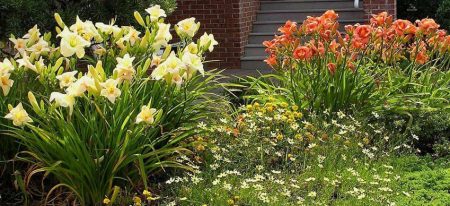
Pruning
These flowers need pruning as soon as flowering ends. And with the onset of late autumn, the entire ground part of the bushes should be completely cut off.
Knowing how to care for these beautiful flowers, and about what other flowers the daylily combines in the design of the garden (photo), you can create an unusual, magical garden in your area, which will be a pleasure to be in!

